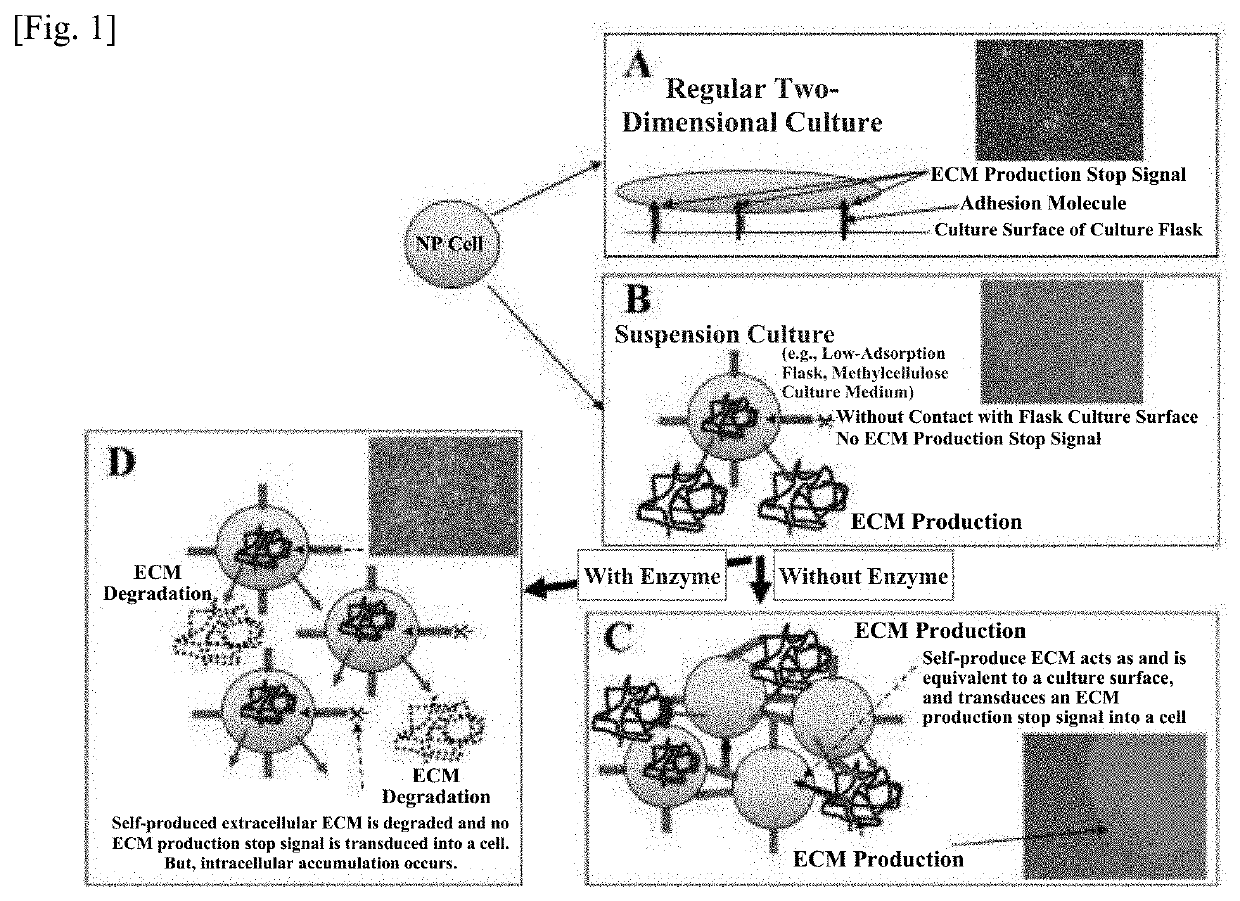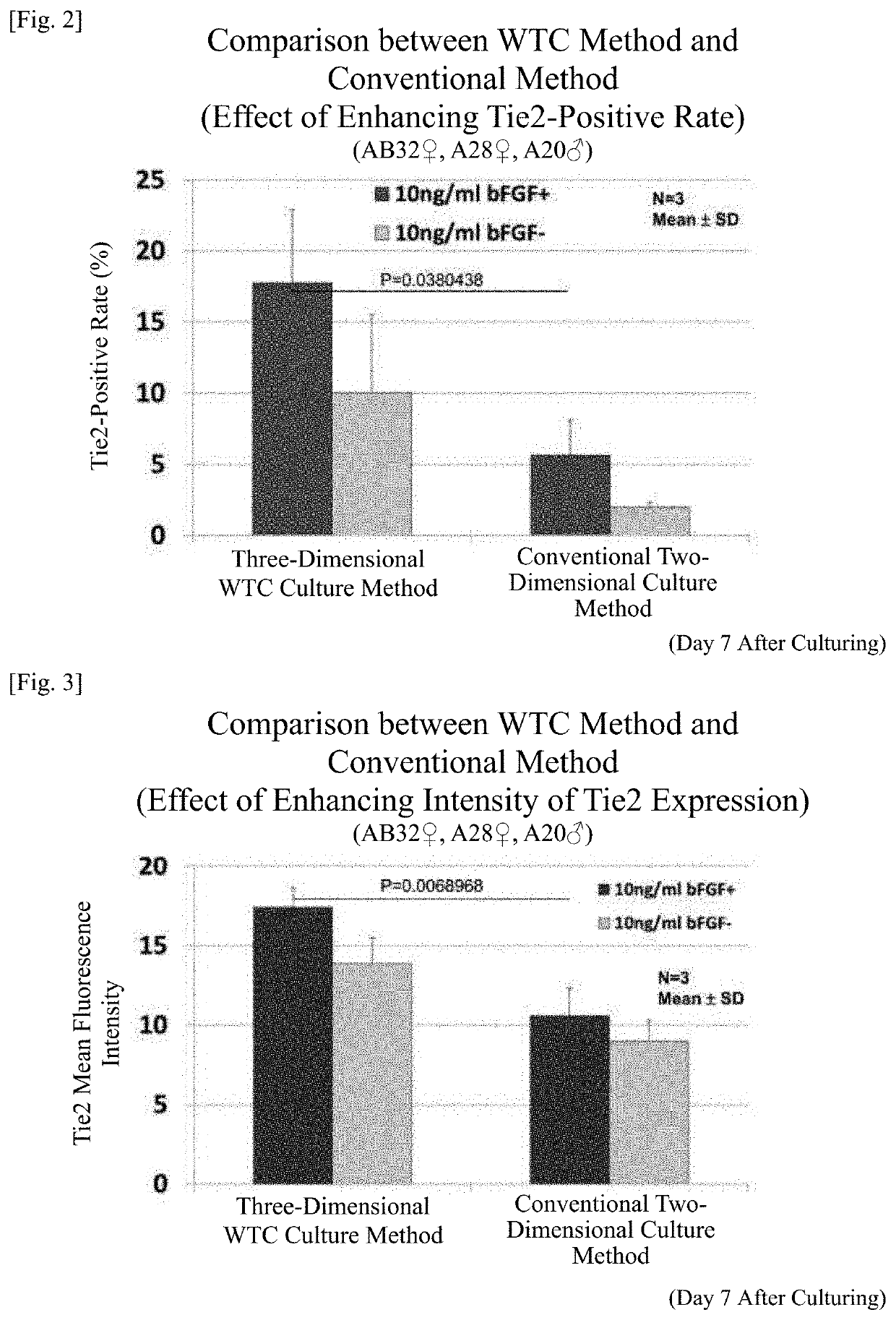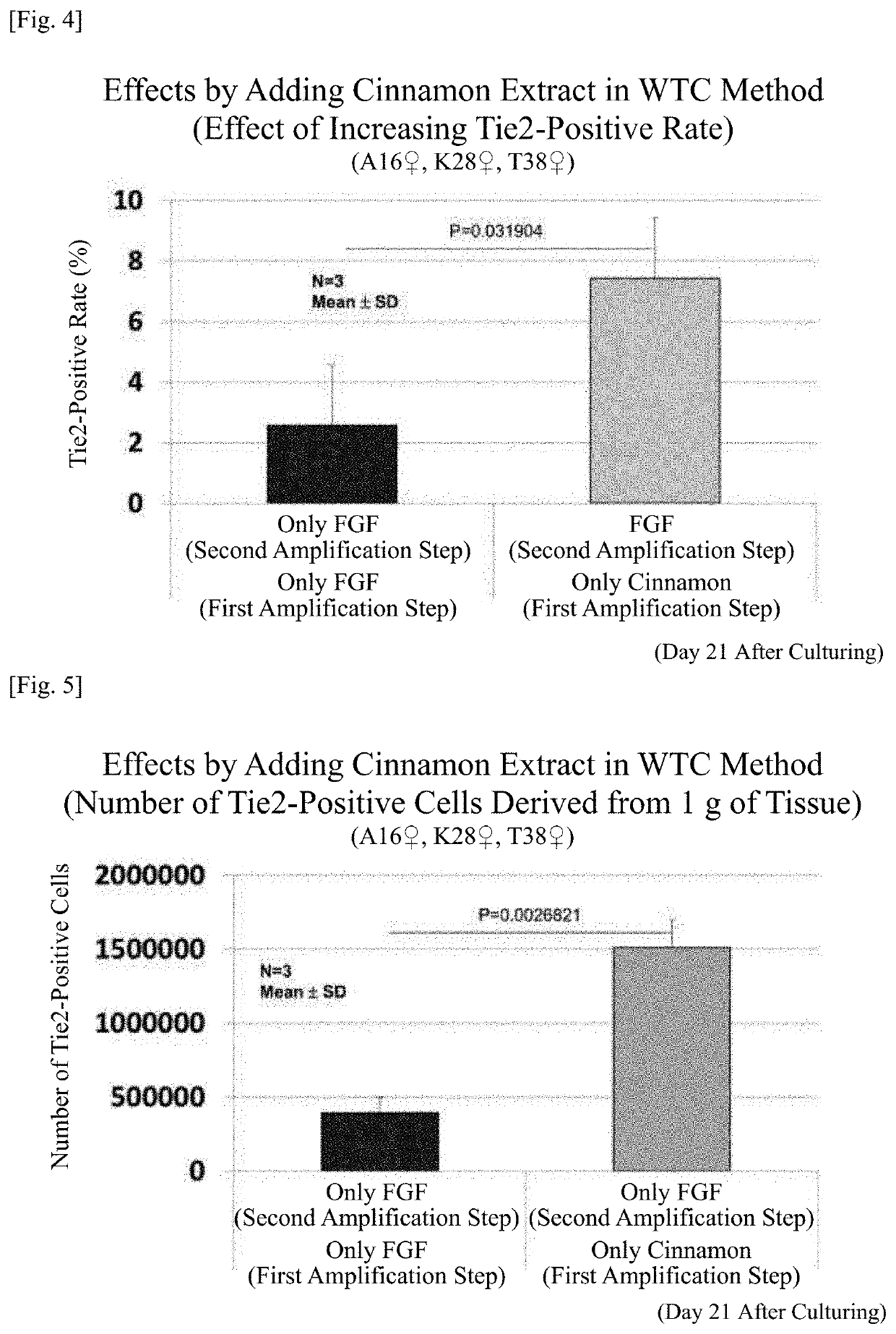Method of culturing cell population and use thereof
- Summary
- Abstract
- Description
- Claims
- Application Information
AI Technical Summary
Benefits of technology
Problems solved by technology
Method used
Image
Examples
Example
Test Example 1
Amplification Culture Stage: the First Culturing Step (WTC Method)
[0279]
TABLE 1Amplification culture stage (7 days)TestAdditional component toExampleprepare a culture mediumCulture method1-110 ng / mL bFGFWTC method1-2—WTC method1-310 ng / mL bFGFTwo-dimensionalculture method1-4—Two-dimensionalculture method
[0280]A nucleus pulposus tissue of an intervertebral disc excised from an affected part of each patient with disc herniation (a 32-year-old woman, a 28-year-old woman, or a 20-year-old man) was finely cut into a size of several-mm cubes using scissors and other instruments. Next, 0.1 to 0.5 g of the finely cut nucleus pulposus tissue containing the cell population was suspended in 3 mL of culture medium prepared such that the additional component designated in Table 1 was added to the culture medium for amplification culture stage. Thereafter, the mixture was dispensed into one well of a 6-well culture dish (the culture surface was untreated), and cultured for 7 days (b...
Example
Test Example 2
Amplification Culture Stage (Two Steps): the First-Second Culturing Step +an Additional Step
[0283]
TABLE 2Amplification culture stageStep 2 (7 days)TestStep 1 (14 days)AdditionalExampleAdditional componentCulture methodcomponent2-110 ng / mL bFGFWTC method10 ng / mL bFGF2-2Cinnamon extractWTC method10 ng / mL bFGF
[0284]First, 1 mg of commercially available cinnamon powder was suspended in 1 mL of distilled water and extracted overnight at 37° C. The resulting extract (cinnamon extract) was used in this test.
[0285]Substantially the same culturing step as in [Test Example 1] (Test Examples 1-1 and 1-2) was repeated except that patients with disc herniation from whom a nucleus pulposus tissue of an intervertebral disc was collected were a 16-year-old woman, a 28-year-old woman, and a 38-year-old woman, a culture medium was prepared such that the additional component designated in Table 2 was added to the culture medium for amplification culture stage, and was used in the first s...
Example
Test Example 3
Amplification Culture Stage (Two Steps): the First-Second Culturing Step +An Additional Step −>Differentiation Culture Stage: The Third Culturing Step
[0288]
TABLE 3DifferentiationAmplification culture stagecultureStep 1 (14 days)Step 2 (7 days)stageTestAdditionalCultureAdditional(14 days)ExamplecomponentmethodcomponentCultureware3-1CinnamonWTC10 ng / mLPLL coatingextractmethodbFGF3-2CinnamonWTC10 ng / mLNo coatingextractmethodbFGF
[0289]Two steps at the amplification culture stage were performed for a total of 21 days by substantially the same procedure as in Test Example 2 except that disc herniation patients from whom a nucleus pulposus tissue of an intervertebral disc was collected were a 16-year-old women, a 30-year-old man, and a 30-year-old women. After cultured, the cell population was collected. In a step at the differentiation culture stage, a monolayer culture was performed for 14 days on a culture dish coated with poly-L-lysine (PLL) (Test 3-1) or a culture dish w...
PUM
 Login to View More
Login to View More Abstract
Description
Claims
Application Information
 Login to View More
Login to View More - R&D
- Intellectual Property
- Life Sciences
- Materials
- Tech Scout
- Unparalleled Data Quality
- Higher Quality Content
- 60% Fewer Hallucinations
Browse by: Latest US Patents, China's latest patents, Technical Efficacy Thesaurus, Application Domain, Technology Topic, Popular Technical Reports.
© 2025 PatSnap. All rights reserved.Legal|Privacy policy|Modern Slavery Act Transparency Statement|Sitemap|About US| Contact US: help@patsnap.com



